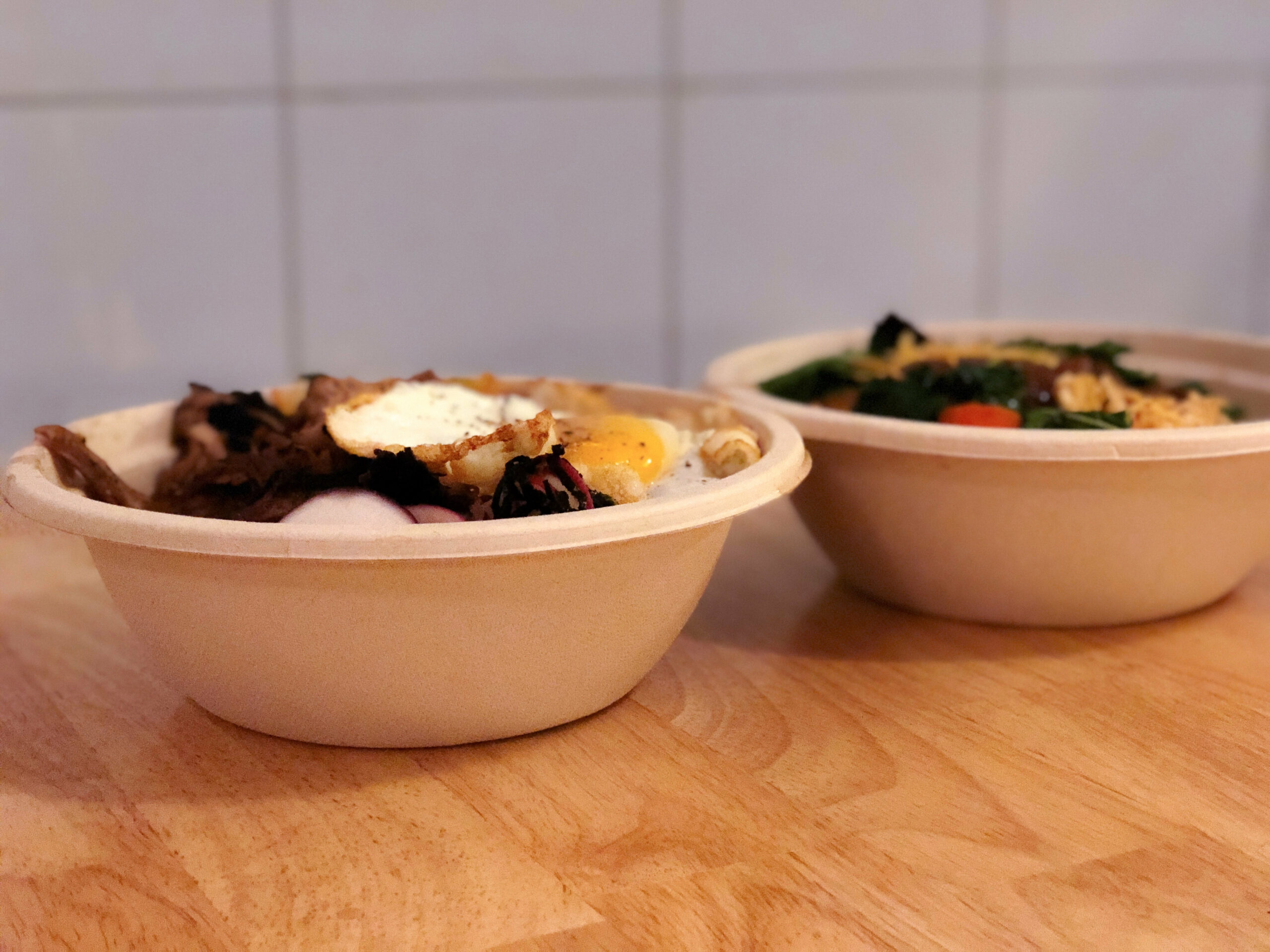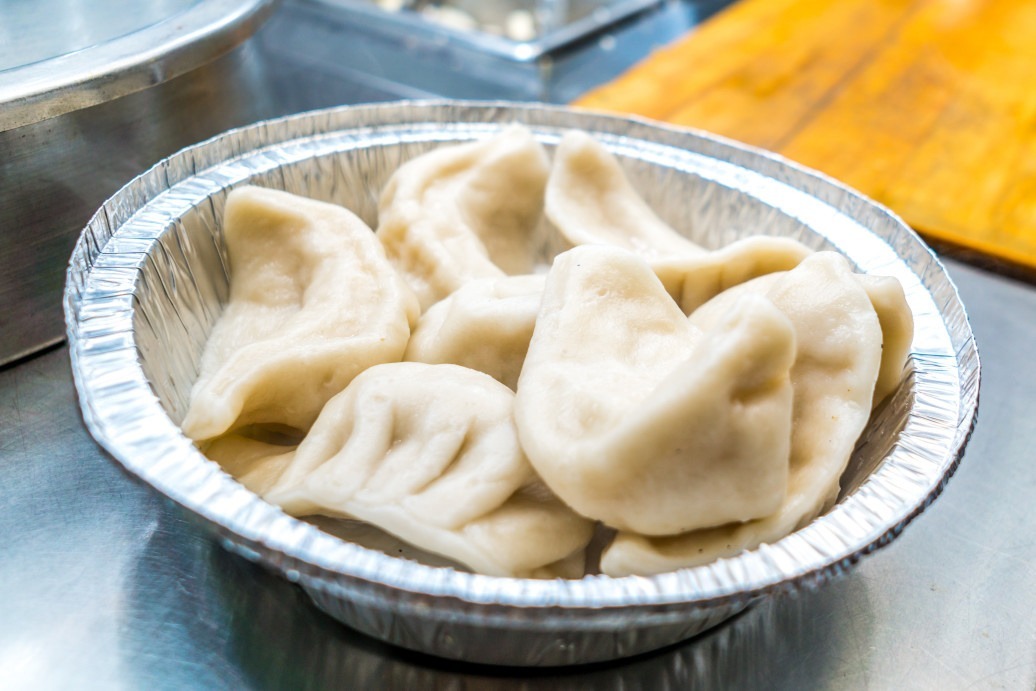Everything You Need to Know about Take Out Containers
and tips for healthier alternatives
Let’s start by acknowledging that take out is a wonderful invention, especially during the pandemic. Getting takeout is one of the only activities that still feels normal, helps support local business, and brings so much joy! While we’re not going to give up our Postmates habit any time soon, we do have a few suggestions for ways to make your next lunch or Tuesday night takeout a little healthier, without saying you have to order the steamed veggies.
Our focus is on what the food comes in and not what you are ordering – no judgement here if you get the pizza and cheesy bread (they’re different!). We are more concerned about the container your food might be served in. That styrofoam container housing your piping hot pad thai or that molded fiber bowl your fancy grain bowl is served in might pose a hidden health risk.

Well, here’s the deal, all that packaging can affect the food, and in turn, your health down the road. And not like heart disease from a greasy indulgence now and again or a bout of food poisoning, but things like infertility, suppressed immune functions, and even neurological disorders. These issues, and others that result from a disrupted endocrine system, are associated with the highly fluorinated chemicals (PFAS) and various types of plastic present in most take out and food packaging materials.
But to be completely frank, figuring out what exactly is in the specific container your favorite restaurant uses isn’t all that easy. There are so many different options when it comes to to-go containers that it can be migraine-inducing trying to figure out what is what. So, rather than listing out every possible take out container you might see and saying this one is safe, but this one isn’t, we are just going to share some info that’s easy to remember and can make a general improvement. Because hey, every little change adds up and makes a difference down the line.
So, here’s the deal. We went through this report from Center for Environmental Health and a recent study on grocery takeout containers, and pulled out some of the main facts. We compared those with other info researchers have found, and came up with this list of facts and tips for creating an even better takeout experience.

4 Facts about Take Out Containers
- The “best” options (meaning the ones that contains the fewest chemicals that are likely to leach into your food or the environment after you throw it away) are ones that are compostable and fluorine free. That means those brown paper boxes marked with a green seal saying they are made from 100% recycled paperboard or the white paper soup containers that have a green stripe and similar compostable markings. Another option is plastic-like containers that are actually made of something called bioplastic or PLA (polylactic acid) that are completely compostable. These are often used for things like salads or compostable cold drink cups. Foil containers also seem to be safe because foil is less likely to change due to heat.
- If you can’t find compostable, or foil containers, the next best options are plastic containers that are recyclable and marked with the number 2 or the number 5. These are “safer” plastics when it comes to transporting hot food, and they can be easily recycled in most communities.
- Styrofoam is bad. We all instinctively know it. What even is that material? (answer: it’s polystyrene, which is a form of plastic). Anyway, if you can avoid it you should. It easily releases chemicals into hot foods and drinks and takes forever to break down in the world once you toss it and is not really recyclable.
- Molded fibers, so things like those brown cardboard-y bowls that look natural like they should be better for you, often aren’t. To make the paper water and oil resistant, they often use a highly fluorinated chemical, which isn’t something we want a lot extra of in our bodies.
And, if even that sounds like a lot to remember, here are some tips that can help reduce the impact takeout containers have on your life.

The Good News
Thankfully, in recent years retailers have started taking a stance against PFAS in their packaging. Many are committing to phasing PFAS out from the packaging or have stopped using this harmful chemical altogether! Big chain stores like Whole Foods and Trader Joe’s have started to take action to stop using packaging with PFAS, as well as fast food chains like McDonald’s and Taco Bell who have pledged to fully change their packaging by 2025. Chipotle has gone one stop further and totally eliminated this type of packaging. Make sure to support the places that are taking action!
States have also started to propose legislation to ban these harmful chemicals from packaging. New York, Washington, and Maine have already prohibited PFAS in food packaging and many states have provided new legislation that has not been passed yet or will go into effect in the next few years. And that’s not all! Maine and dozens of cities in other states have banned the use of styrofoam as food containers.
The good news doesn’t stop there! There are a growing number of companies and startups that are trying to solve this issue of wasteful and toxic takeout containers. A couple examples of these companies are Dispatch Goods in San Francisco and Go Box started in Portland. Both of these companies are providing reusable containers to restaurants and then later picking them up from the customer as well as providing drop off sites at different locations throughout the city. There are a lot of new companies working on removing toxic chemicals from our takeout containers and trying to reduce the amount of waste that they create. So while we wait for bills and legislation to be passed, we can rest easier knowing that there are some companies taking action into their own hands.
4 Tips for Healthier Take Out
Phasing out or banning the use of PFAS or styrofoam is a big step in the right direction to lessen our exposure to these toxic chemicals. But until we have a nationwide (or global!) ban on these chemicals from food contact, you might also want to check out these tips for making your take out experience a little healthier.
- Try to notice what your food comes in when your food arrives, then order from places that already use better options. It doesn’t have to be every time (maybe you are just really craving that chicken from the place on the corner that only uses styrofoam clamshells – that’s okay), but if you are between two, let the packaging factor in.
- Before ordering your food ask the server or hostess what kind of containers the food will come in. If the food comes in a container that you’re not happy with, maybe try somewhere else for dinner. And if you are really outgoing or go to the same place regularly, consider talking to them about switching to something better like compostable options.
- If you are feeling passionate about this issue, try getting involved at the local level or find organizations in your area that are working on it or a similar issue. There are a lot of organizations fighting to ban styrofoam or harmful chemicals from food packaging and even to create state composting systems. You could also start your own movement, the sky’s the limit!
